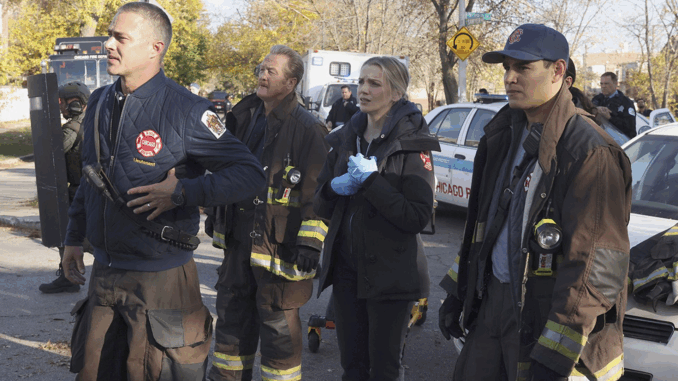
For over a decade, Chicago Fire has delivered its fair share of heart-pounding moments, from explosive warehouse fires to harrowing rescues. The show has a reputation for delivering high-stakes finales, leaving fans on the edge of their seats with dramatic cliffhangers and emotional goodbyes. But among all the epic conclusions and shocking twists, there is one finale that still stands above the rest, a single episode whose final five minutes cemented its place in television history. The finale of Season 1, Episode 24, remains, to this day, the show’s absolute best.
The episode, titled “A Hell of a Ride,” was the culmination of a full season of simmering tension and character-driven drama. We had spent 23 episodes getting to know the men and women of Firehouse 51, following their personal triumphs and professional heartbreaks. We had seen Lieutenant Matt Casey (Jesse Spencer) grapple with a personal tragedy, Kelly Severide (Taylor Kinney) navigate a secret addiction, and the entire team struggle to find their place in the department. The finale was set to be a quiet one, a final episode that would tie up a few loose ends and leave a few questions unanswered. But in its final moments, the show did something no one saw coming: it delivered a powerful, heartbreaking, and ultimately game-changing final act that proved the show was more than just a procedural.
The Setup: A Quiet End to a Tumultuous Season
The episode begins with the team dealing with the fallout of the season’s events. Severide is facing an internal investigation, Casey is still reeling from the events that defined his season, and the team is grappling with a general sense of unease. The episode’s narrative felt like a slow and steady denouement, a way to gently usher the audience into the show’s second season. The fire calls were less about explosions and more about emotional weight. A fire at a family home, a rescue that was more about compassion than courage. The show seemed to be leaning into its emotional core, a choice that made the final act all the more shocking.
The plot then turns to a massive, out-of-control warehouse fire, a classic Chicago Fire staple. The team arrives on the scene and, as always, they jump into action. The fire is a monster, and the team is pushed to their limits. But in a show known for its big, bold rescues, this fire felt different. It was a backdrop, a stage upon which the real drama would unfold. The real story was about the two characters who were trapped inside the building: a desperate father and his young son.
The 5 Minutes of Genius: An Unforgettable Conclusion
The final five minutes of the episode are a masterclass in tension and emotional payoff. The team is running out of options, and the fire is getting worse. In a desperate final attempt, Matt Casey and his fellow firefighters make a final push into the building to save the trapped father and son. The scene is a frantic and terrifying ballet of courage and desperation. The sound is a mix of roaring flames, screaming, and the frantic orders of the firefighters. The camera work is shaky and chaotic, making the audience feel as if they are right there in the middle of the inferno.
But then, in a devastating moment, the ceiling collapses. We see Casey, trapped and injured, and the fate of the father and son is left in question. The final shot is a slow, methodical zoom out from the collapsing building, the flames consuming the frame. The last thing we see is the team, helpless and horrified, as they watch their friends get trapped inside. The episode ends on this brutal, heart-stopping cliffhanger. There is no triumphant rescue. There is no happy ending. There is only a sense of impending doom and a powerful, painful uncertainty.
The Legacy: A Game-Changer for Television
The final five minutes of “A Hell of a Ride” were a game-changer for Chicago Fire and for the procedural drama genre as a whole. Before this episode, many procedurals relied on a formulaic structure: a problem, a solution, and a happy ending. Chicago Fire shattered that formula. It was a bold and unapologetic choice, one that proved the show was willing to take risks and to put its characters in real, tangible danger. It was a statement to the audience that no one was safe, that the stakes were real, and that the consequences of their actions were dire.
The finale was not just a plot device; it was a character study. It was a final, brutal reminder of the sacrifices these characters make every day. It forced the audience to confront the reality of their jobs, a reality that is filled with danger, uncertainty, and the constant threat of loss. It was a powerful and emotional punch that resonated with the audience long after the credits rolled. The episode’s success proved that a procedural could be just as emotionally resonant as a character-driven drama.
The impact of this finale is still felt today. It set the standard for every finale that came after it, and it cemented Chicago Fire‘s place in television history. It was a moment of true genius, a final five minutes that were so powerful and so effective that they still hold up 13 years later. It was a reminder that the best television is not always about a happy ending. Sometimes, the most powerful stories are the ones that leave you speechless,


